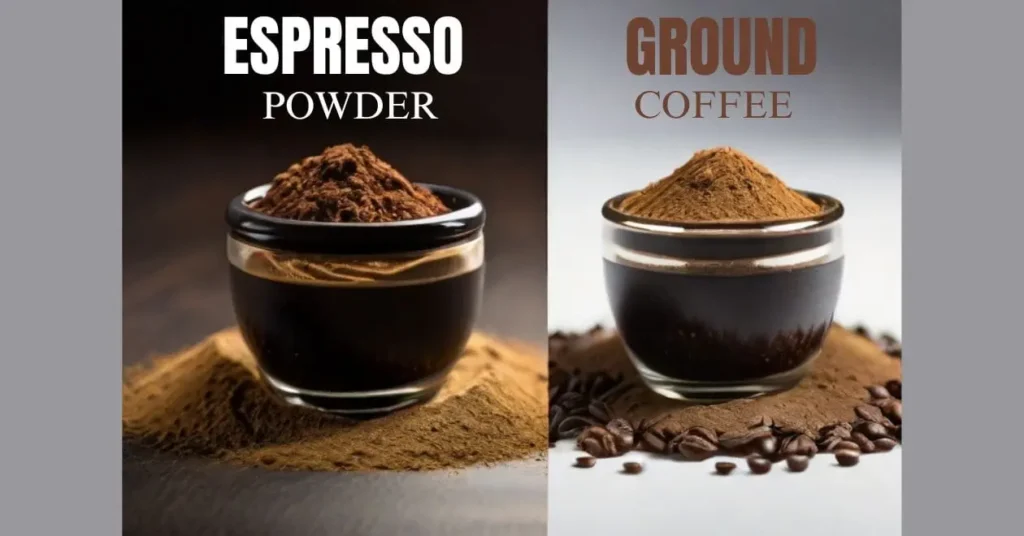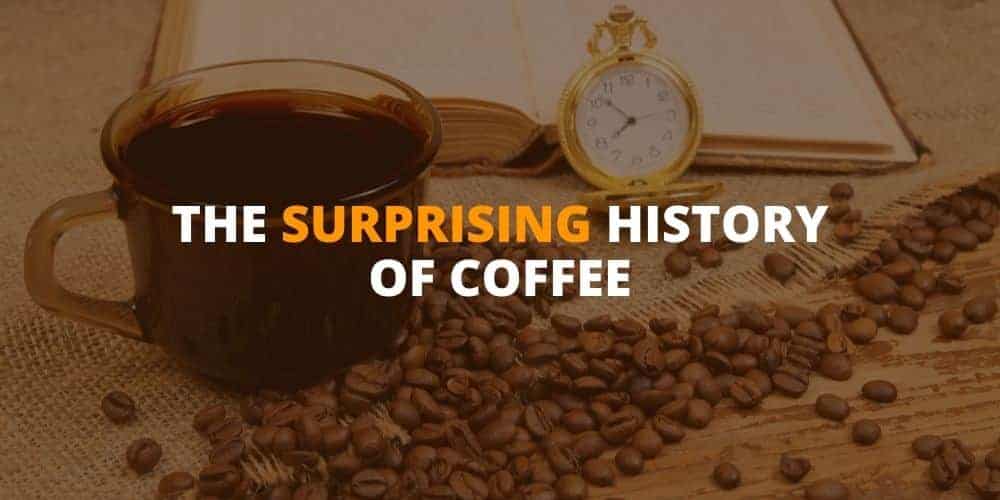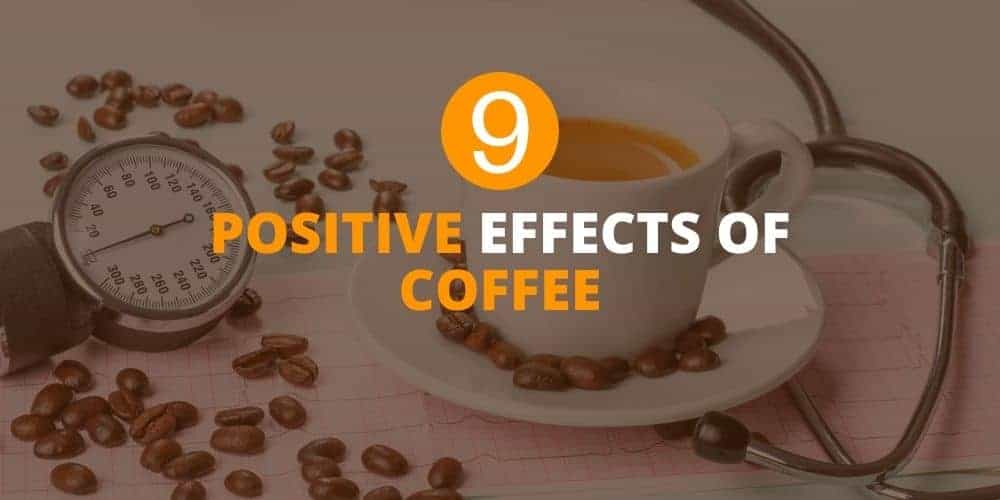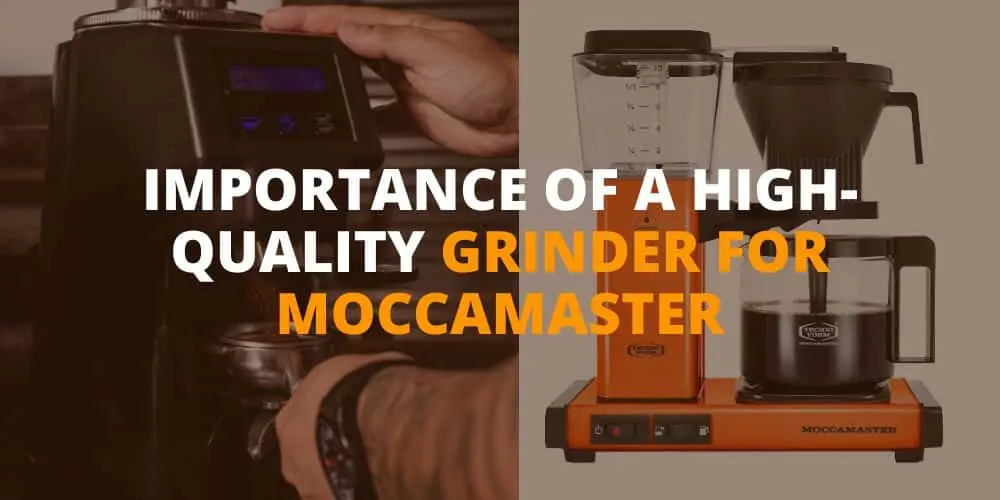Pour Over coffee and drip coffee brewing methods differ in the way water is poured over the coffee grounds; pour over coffee involves pouring water manually over grounds placed in a filter, while drip coffee uses an automatic machine to pour water over the grounds. Pour over coffee allows for more control and customization, resulting in a more flavorful and aromatic cup of coffee, whereas drip coffee offers convenience and consistency with less hands-on involvement.
For coffee enthusiasts, choosing the right brewing method can make a significant difference in the taste and overall experience. Each method has its own merits and unique qualities that cater to different preferences. We will explore the differences between pour over and drip coffee to help you make an informed decision and find your preferred brewing style.
What Is Pour Over Coffee?

Pour over coffee is a manual brewing method that involves pouring hot water over coffee grounds placed in a filter. It requires a pour over coffee maker, which typically consists of a carafe, a conical or flat-bottomed dripper, and a paper or metal filter. The goal is to achieve a controlled and evenly extracted brew, allowing the flavors and aromas of the coffee to shine.
The Brewing Process
The brewing process is key to creating a delicious pour over coffee. Here’s a step-by-step guide:
- Start by boiling fresh, filtered water and let it cool slightly. The ideal temperature for pour over brewing is between 195°F and 205°F (90°C – 96°C).
- Meanwhile, grind your coffee beans to a medium-coarse consistency, similar to sea salt. This ensures optimal extraction without over or under extraction.
- Place the filter in the dripper and rinse it with hot water to remove any papery taste and preheat the equipment. Discard the water from the carafe.
- Add the ground coffee to the filter, making sure it’s level for an even extraction. Gently tap the dripper to settle the grounds.
- Place the pour over setup on a scale and tare it to zero. This allows you to measure the exact amount of water added.
- Start the brewing process by pouring a small amount of water (approximately double the weight of the coffee) in a circular motion, allowing the grounds to bloom. This pre-infusion lets the flavors develop and gases escape.
- Continue pouring the remaining water in a slow and controlled manner, maintaining a circular motion around the coffee bed. Aim for a total brew time between 3 to 4 minutes.
- Once the desired yield is reached, remove the dripper, give the carafe a gentle swirl, and pour the coffee into your favorite mug.
Benefits Of Pour Over Coffee
Pour over coffee offers numerous benefits that make it a favorite brewing method for many coffee enthusiasts. Here are some reasons to give pour over a try:
- Precision and Control: Pour over allows you to have precise control over the brewing variables such as water temperature, pour rate, and extraction time. This ensures consistency and allows you to adjust the recipe to suit your taste preferences.
- Enhanced Flavor: The slow and gradual extraction process of pour over coffee brings out the nuanced flavors and aromas of the beans, resulting in a clean and vibrant cup of coffee.
- Clarity and Cleanliness: The paper or metal filter used in pour over filters out any sediment or oils, resulting in a clean and sediment-free cup of coffee.
- Artistry and Ritual: Pour over coffee brewing is not just about the end result, but also the process itself. It allows you to engage in a mindful and artistic ritual, as you pour the water over the grounds and witness the mesmerizing bloom.
- Portability and Simplicity: Pour over setups are lightweight and portable, making it easy to brew a perfect cup of coffee wherever you go. All you need is a pour over dripper, filters, your favorite coffee beans, and hot water.
What Is Drip Coffee?
Drip coffee is brewed using an automatic drip coffee maker, which typically consists of a water reservoir, a filter basket, and a warming plate. The brewing process allows water to evenly saturate the coffee grounds, extracting the flavors and aroma as it passes through the filter and into the carafe.
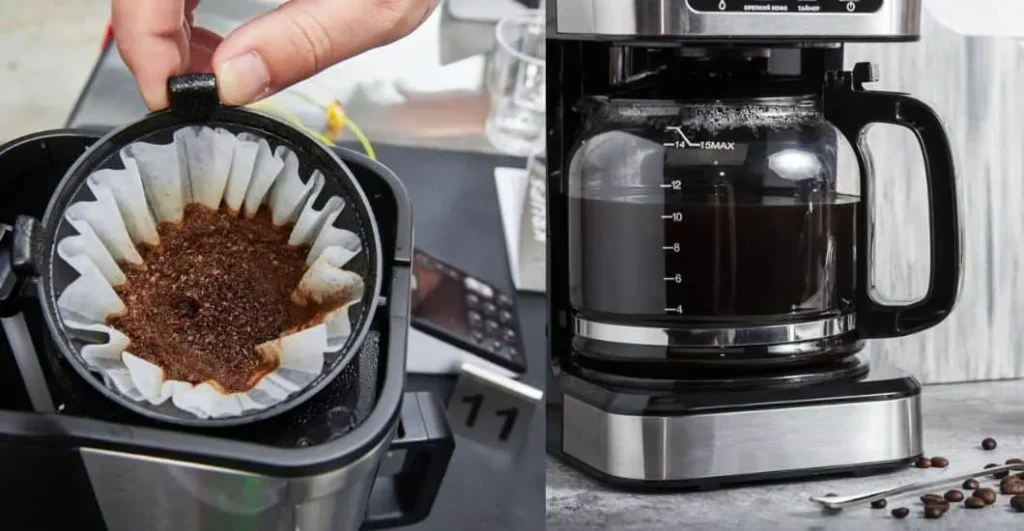
The Brewing Process
The brewing process starts as the cold water from the reservoir is heated to the ideal temperature, usually between 195-205°F. The heated water then trickles over the coffee grounds, passing through the filter and finally drips into the carafe, resulting in a smooth and well-balanced cup of coffee.
Advantages Of Drip Coffee
- Convenience: Drip coffee makers are easy to use, making them a convenient choice for busy individuals.
- Consistency: The automated brewing process ensures a consistent taste with each batch.
- Large Capacity: Drip coffee makers can brew multiple cups at once, making them suitable for households or offices.
Key Differences
Pour over coffee and drip coffee have key differences. Pour over coffee involves manually pouring hot water over coffee grounds, resulting in a more customized and flavorful brew. Drip coffee, on the other hand, is brewed automatically with a machine, offering convenience but potentially sacrificing some flavor. Choose according to your preferences!
Brewing Method
Pour over and drip coffee are two popular methods of brewing coffee, each with its own set of characteristics and brewing techniques. Pour over coffee involves manually pouring hot water over coffee grounds, allowing the water to slowly drip through a filter and into a carafe or cup below.
This method requires a certain level of skill and precision, as the pour rate and water temperature can greatly affect the final cup of coffee. The slow extraction process of pour over coffee results in a clean, fully developed flavor profile.
On the other hand, drip coffee is brewed using an automatic machine that pours hot water over coffee grounds in a controlled manner. The water is dripped through a filter and collected in a carafe. Drip coffee machines are convenient and easy to use, making them a popular choice for many coffee enthusiasts.
Control Over Extraction
One of the key differences between pour over and drip coffee is the level of control over the extraction process. With pour over coffee, the brewer has complete control over how the hot water is poured over the grounds.
This control allows for adjustments in pour rate, water temperature, and agitation, resulting in a more customized extraction. The slow pour and manual control in pour over brewing often yield a more nuanced and flavorful cup of coffee.
On the other hand, drip coffee machines automate the brewing process, limiting the control the user has over extraction. While some machines offer brewing adjustments, they may not provide the same level of precision and customization as pour over brewing. This can result in a cup of coffee that is less tailored to individual tastes.
Flavor Profile
The brewing method used for coffee can significantly impact its flavor profile. Pour over coffee is often praised for its clean and well-rounded taste. The slow extraction process allows for a more thorough extraction of coffee flavors, resulting in a balanced and aromatic cup.
Coffee brewed through the pour over method tends to have fewer bitter notes and highlights the nuances of the beans used. Drip coffee, on the other hand, can produce a cup with a slightly different flavor profile.
The automatic brewing process of drip coffee machines may not achieve the same level of extraction as pour over, which can result in a cup that is less nuanced and slightly more bitter.
However, the convenience of drip coffee machines often outweighs these slight differences in taste for many coffee drinkers. While both pour over and drip coffee can produce a satisfying cup, the key differences lie in the brewing method, control over extraction, and flavor profile.
Pour over allows for a more hands-on, customizable experience with a fuller flavor profile, while drip coffee offers convenience with a slightly different taste. Ultimately, the choice between the two methods comes down to personal preference and desired brewing experience.
Related Post: Pour Over Vs French Press Coffee
Factors To Consider
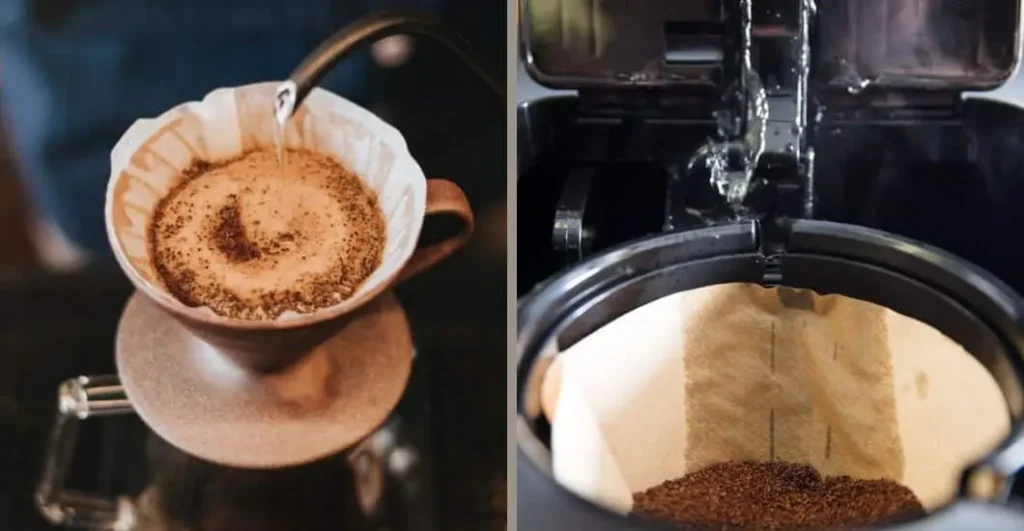
When it comes to choosing between pour over and drip coffee, there are several factors to consider. Each brewing method has its own unique advantages and disadvantages, so it’s important to weigh them carefully before making a decision. Here are three key factors to think about:
Time And Convenience
When you’re rushing to get out the door in the morning, time and convenience are essential. Drip coffee is undeniably the winner in this category. With the push of a button, your coffee starts brewing, allowing you to multitask while it prepares.
On the other hand, pour over coffee requires more time and attention. You need to heat the water separately, pour it over the grounds in a slow and steady motion, and wait for each pour to fully extract the flavor. This hands-on method is definitely a labor of love.
Cost
If you’re on a tight budget, the cost of both the coffee and the equipment should be a major consideration. In terms of coffee beans, both pour over and drip brewing methods can accommodate a wide range of options.
However, when it comes to equipment, pour over requires a bit more investment. You’ll need a pour over dripper, a gooseneck kettle for precise pouring, and a scale to measure your coffee and water ratios accurately. Drip coffee makers, on the other hand, are often more affordable and readily available.
Equipment Needed
Speaking of equipment, let’s delve deeper into what you’ll need for each brewing method. With drip coffee, all you need is a drip coffee maker and the appropriate filters. It’s a straightforward and user-friendly setup.
Pour over, on the other hand, requires a more hands-on approach. You’ll need a pour over dripper, a gooseneck kettle, a scale, a grinder, and filters specific to your pour over dripper. While this setup may be more time-consuming and require more counter space, it allows for greater control over the brewing process and a more customizable cup of coffee.
Which One Should You Choose?
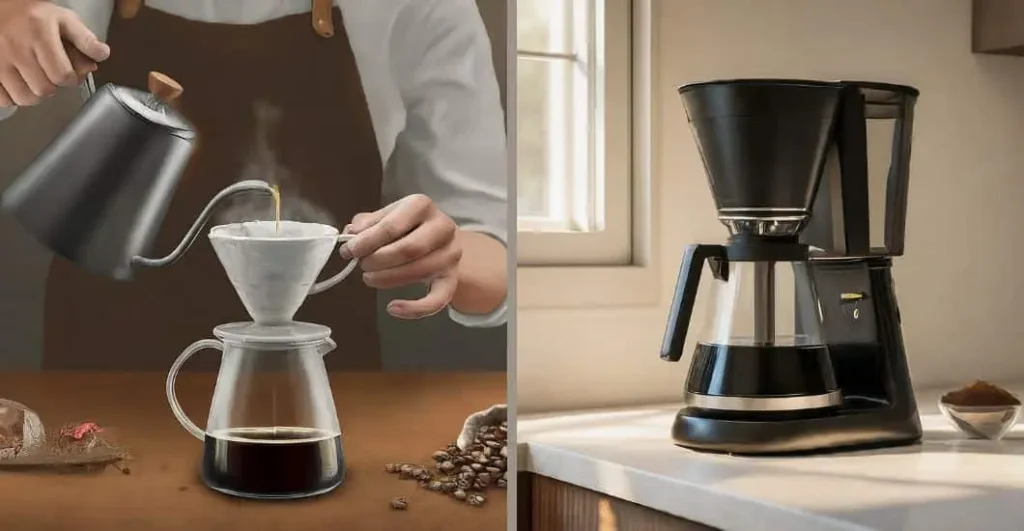
When it comes to choosing between pour over and drip coffee, deciding which one is right for you can be a tough decision. There are several factors to consider, including personal preference, level of brewing expertise, and desired flavor characteristics.
Personal Preference
Personal preference plays a significant role in determining whether pour over or drip coffee is the better choice for you. Some individuals enjoy the hands-on process of pour over brewing, finding it to be a meditative and enjoyable experience. On the other hand, those who prefer a more convenient and time-saving method may lean towards drip coffee.
Level Of Brewing Expertise
For individuals who have a passion for the art of coffee brewing and are willing to invest time and effort into mastering the craft, pour over may be the ideal choice. Drip coffee, on the other hand, is perfect for those who are new to brewing or seek a more straightforward and consistent method of preparation.
Desired Flavor Characteristics
When it comes to flavor, pour over and drip coffee offer distinct characteristics. Pour over brewing often results in a more nuanced and flavorful cup, allowing the subtle notes of the coffee beans to shine through. Drip coffee, on the other hand, delivers a reliable and consistent flavor profile that appeals to individuals who prefer a familiar taste with every brew.
Conclusion
To sum up, whether you prefer the precision of pour over or the convenience of drip coffee, both methods have their own set of advantages. Ultimately, the choice between the two depends on your personal preference for flavor, control, and convenience.
Whichever method you choose, it’s all about enjoying that perfect cup of coffee.
A. I. Moon
A.I. Moon, an experienced SEO Pythonista, spends his days coding and developing web applications to help business owners. A passionate coffee enthusiast, he believes that drinking coffee fuels his creativity and productivity. His day isn't complete without the rich aroma and invigorating warmth of a perfectly brewed cup. This love for coffee inspired him to found EspressoRivo, a platform dedicated to sharing his coffee knowledge and fostering a community of passionate aficionados.
